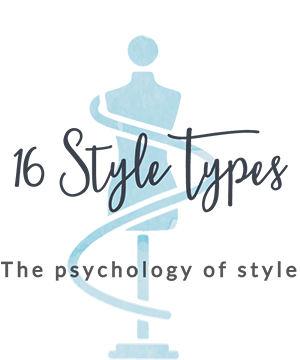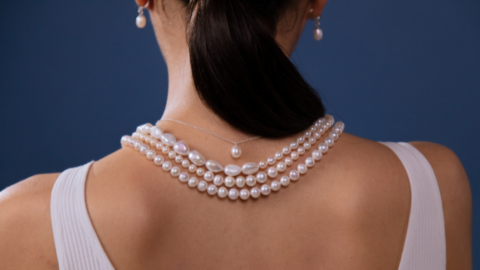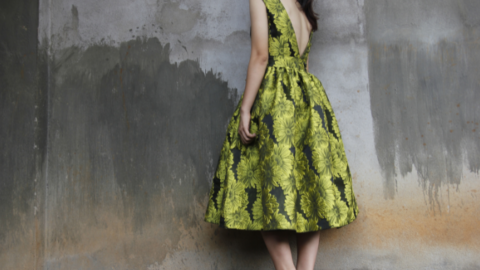The 16 Style Types
Style is a deeply individual thing. Some say style is something you’re born with, others say that everybody can learn to be stylish. Our view captures both perspectives: that some people are born with more of an interest in style than others, and that every person who wishes to become more stylish, can.
Your experience and expression of style is highly intertwined with your personality preferences. By better understanding yourself and your personality preferences, you can identify the essence of your style, make better style decisions, claim your true authentic beauty, and express your sense of style with confidence.
We have identified 16 Style Types. These 16 Style Types are linked to the global phenomenon that the 16 personality styles are, based on the Jung/Myers Briggs model of psychological types. Millions of people around the world have identified their personality type using this model, and it remains one of the most trusted, reliable and valid models for understanding personality.
We have done something nobody has successfully achieved before: combined this trusted model of 16 personalities with style. We have drawn out the essence of a woman’s style, based on her personality profile, and connected it with style in a powerful way.
If you’re interested in simply knowing more about the 16 Style Types, this page gives you an overview of each.
Click on each of the bubbles to discover more about each of the style types
The Style Inspirer
ENFPs see their wardrobes as a possibility playground. They know that the right outfit will mirror the genuine warmth, social skills and infectious enthusiasm that makes it easy to engage with others quickly. Connecting is effortless when the stylish ENFPs outfit resonates with their inner vibrancy and optimism. Partly because blending in with the crowd would thwart the easy rapport they seek, they do not want to wear what everyone else is wearing. Some types purchase outfits, ENFPs see individual pieces that might be creatively blended in different ways, with different accessories, for different moods, occasions, or simply for variety.
The Style Enigma
INFJs can envision the perfect ensemble for an occasion in their minds eye. They just know an outfit or certain items are right, and create and hold a vision of their stylish self as their guiding light. If they can’t find, create or manifest this vision on one or two shopping forays, they often keep wearing what is already in their closet rather than settle for something less than their ideal. While fashion may not be at the top of their priorities, INFJs usually understand that dressing right might just add credibility to their ideas.
The Style Adviser
ESFJs strive to dress appropriately and are aware of the impact of style in their interactions with others. Having a great sense of style harmonizes with their natural ability to quickly develop rapport with others. Often passionately interested in style, clothing and all that it conveys, their clothing is an authentic representation of who they are being today. ESFJs may find it necessary to adapt their style to be most pleasing to whomever they are with and for whatever they are doing or with a particular goal in mind, and are often relied on as trusted style advisers to friends and family.
The Style Original
INFPs strive to have their wardrobes reflect their core inner values. For example, if they value simplicity or environmentalism, their clothing may feature organic fabrics, or they may purchase only gently used clothing (never new or mass produced). If they value beauty, they may consider their wardrobe choices a way to add beauty to their surroundings and develop an artistic approach to style. If they value humility, they may dress to not draw attention to themselves. The antithesis of ‘dressing to impress’, style and clothing form an integral yet subtle part of an INFPs ability to be true to themselves.
The Style Connector
ENFJs often seek to dress for those they will be with. For example, “business attire” may change if clients are older, younger, in a creative or a conservative industry, entrepreneurs struggling to get a business off the ground, and so on. ENFJs are amazingly aware of the feelings of others and are often adept at sensing how people are reacting to them and what they are wearing. ENFJs are also keenly aware that their own mood can be affected by not feeling put together or by straying too far from their own sense of style.
The Style Artisan
ISFPs approach to style is often subtle, dressing to ensure that they don’t draw unnecessary attention, yet will still express their uniqueness. Some ISFPs stand out more through choice of an asymmetrical silhouette, unusual piece of jewellery or unexpected color combination – but they’re doing it to amuse themselves and for artistic expression, not to attract attention. Averse to conflict and tension, their style choices are always founded on what will work for the current situation, including the people they are spending time with. ISFPs possess a strong sense of style that is expressed in an unpretentious way.
The Style Celebrator
ESFPs have an approach to style that is founded on the practical – what does the situation and environment require to give them room to fully participate? They often enjoy clothing, style and shopping, but don’t take it too seriously. ESFPs avoid too much structure and prefer a ‘go with the flow’ approach to their wardrobe, expanding their style choices to accommodate many options. Bored by too much of the same thing, they often change up their outfits by combining new pieces to create an entirely new ensemble, or by purchasing new items which freshen up their wardrobes.
The Style Friend
ISFJs are highly observant, precise and detail-oriented and these strengths shine through their ability to assemble well-coordinated ensembles. They may take a conventional approach to style, wearing classic pieces or adapting a look similar to friends, relatives or role models. Often this is an almost unconscious way of saving time and being appropriate. ISFJs will employ their fine eye for detail to become aware of the colors, fabrics, and shapes that best suit their personal coloring and body shapes.
The Style Explorer
ESTPs find that taking something of a systems approach to their wardrobes and style journey gives them the spontaneity they crave in most aspects of their lives. Adept at making the most of what is available in their environment, they are skilled at adapting the clothing they have or items they find or purchase to best suit themselves or an occasion. At their best with hands-on experimentation, ESTPs find a way to update, upstyle or adapt favorite pieces or ensembles that others may disregard or discard, improvising a style solution that simply works.
The Style Organizer
ISTJs seek structure and clearly defined, reliable rules in how they approach their style. Their low-key and no-nonsense approach is often understated and always practical, always appropriate. Not comfortable standing out, ISTJs know that being exceptionally well groomed avoids drawing attention to themselves for the wrong reasons. Combined with a quiet efficiency and need for routine, the ISTJs wardrobe is dependable and reflects a certain honesty that sits at the core of their sense of personal integrity.
The Style Traditionalist
ESTJs drive for efficiency and closure, and their ability to spot patterns and key components, leads to the development of a practical, personalized and efficient wardrobe tailored to their stylish selves. ESTJs often they see their clothing choices as tools for ensuring that others correctly perceive their competency, social position, influence, and grace. Outfits may function as uniforms or at least a consistent and reliable base for creating these impressions, consistently and carefully.
The Style Maverick
ISTPs may zero in on a few styles, colors, accessories or apparel items that they can dress up or down to meet the needs of the day or occasion with a fine-tuned simplicity. ISTPs have a remarkable ability to avoid overcomplicating things and will narrow down all the clothing options available through clear, carefully chosen criteria to put together a stylish wardrobe that works for them. Never ones to waste time, effort, or movement if logical forethought can be applied, ISTPs ensure that their wardrobes serve their lifestyle, once convinced that style is a worthy pursuit.
The Style Powerhouse
ENTJs see how systems, processes, resources and people can best work together, and this includes style. They notice and make use of intriguing trends in the worlds of fashion, style, color and design. Strategizing rather than following any crowd, logic helps them see what does and doesn’t have value, and their intuition helps them nail exactly what works best for them. ENTJs often view style as part of their personal brand; their style is who they are, not a costume they put on. When their style, personality and purpose align, they present a seamless and powerful persona to the world.
The Style Theorist
INTPs may take an enthusiastic interest in a strikingly independent way to style and to advancing their own style journey. However, they may first need to convince themselves that paying attention to style is a worthy pursuit that can facilitate others’ acceptance of their intellectual ideas. INTPs style decisions are often manifested after much mulling over and incubation time, so much so that an independent check may be required to ensure that their situation (environment, audience, goals) still match the style choices they have finally made.
The Style Chameleon
ENTPs will streamline a workable wardrobe to minimize time spent on style decisions and closet management (clothing care, laundry, etc.) If they are intrigued with creating a unique sense of style, they will theorize, systematize and strategize to develop a unique approach to their style. Comfortable with taking risks, ENTPs view conventional wisdom—about how to dress, how and where to shop, or how to mix colors, textures, or patterns—as challenges to conquer rather than as style rules to blindly follow.
The Style Scientist
INTJs often approach their wardrobe as another problem to be solved, considering how and why things work for them and their wardrobe. It’s displeasing to see themselves look poorly pulled together in the mirror. Style is about creative self-expression, not about standing out or drawing attention by being different. INTJs don’t want to replicate what others wear; instead they will analyze how style is created and then, as establishing their style becomes more important, take a scientific, analytical approach to understanding how successful style works, then execute.
The Charismatic Stylist: ENFP
THE STYLE INSPIRER
ENFPs see their wardrobes as a possibility playground. They know that the right outfit will mirror the genuine warmth, social skills and infectious enthusiasm that makes it easy to engage with others quickly. Connecting is effortless when the stylish ENFPs outfit resonates with their inner vibrancy and optimism. Partly because blending in with the crowd would thwart the easy rapport they seek, they do not want to wear what everyone else is wearing. Some types purchase outfits, ENFPs see individual pieces that might be creatively blended in different ways, with different accessories, for different moods, occasions, or simply for variety.
The Subtle Stylist: INFJ
THE STYLE ENIGMA
INFJs can envision the perfect ensemble for an occasion in their minds eye. They just know an outfit or certain items are right, and create and hold a vision of their stylish self as their guiding light. If they can’t find, create or manifest this vision on one or two shopping forays, they often keep wearing what is already in their closet rather than settle for something less than their ideal. While fashion may not be at the top of their priorities, INFJs usually understand that dressing right might just add credibility to their ideas.
The Charming Stylist: ESFJ
THE STYLE ADVISER
ESFJs strive to dress appropriately and are aware of the impact of style in their interactions with others. Having a great sense of style harmonizes with their natural ability to quickly develop rapport with others. Often passionately interested in style, clothing and all that it conveys, their clothing is an authentic representation of who they are being today. ESFJs may find it necessary to adapt their style to be most pleasing to whomever they are with and for whatever they are doing or with a particular goal in mind, and are often relied on as trusted style advisers to friends and family.
The Eclectic Stylist: INFP
THE STYLE ORIGINAL
INFPs strive to have their wardrobes reflect their core inner values. For example, if they value simplicity or environmentalism, their clothing may feature organic fabrics, or they may purchase only gently used clothing (never new or mass produced). If they value beauty, they may consider their wardrobe choices a way to add beauty to their surroundings and develop an artistic approach to style. If they value humility, they may dress to not draw attention to themselves. The antithesis of ‘dressing to impress’, style and clothing form an integral yet subtle part of an INFPs ability to be true to themselves.
The Expressive Stylist: ENFJ
THE STYLE CONNECTOR
ENFJs often seek to dress for those they will be with. For example, “business attire” may change if clients are older, younger, in a creative or a conservative industry, entrepreneurs struggling to get a business off the ground, and so on. ENFJs are amazingly aware of the feelings of others and are often adept at sensing how people are reacting to them and what they are wearing. ENFJs are also keenly aware that their own mood can be affected by not feeling put together or by straying too far from their own sense of style.
The Charismatic Stylist: ISFP
THE STYLE ARTISAN
ISFPs approach to style is often subtle, dressing to ensure that they don’t draw unnecessary attention, yet will still express their uniqueness. Some ISFPs stand out more through choice of an asymmetrical silhouette, unusual piece of jewellery or unexpected color combination – but they’re doing it to amuse themselves and for artistic expression, not to attract attention. Averse to conflict and tension, their style choices are always founded on what will work for the current situation, including the people they are spending time with. ISFPs possess a strong sense of style that is expressed in an unpretentious way.
The Vivacious Stylist: ESFP
THE STYLE CELEBRATOR
ESFPs have an approach to style that is founded on the practical – what does the situation and environment require to give them room to fully participate? They often enjoy clothing, style and shopping, but don’t take it too seriously. ESFPs avoid too much structure and prefer a ‘go with the flow’ approach to their wardrobe, expanding their style choices to accommodate many options. Bored by too much of the same thing, they often change up their outfits by combining new pieces to create an entirely new ensemble, or by purchasing new items which freshen up their wardrobes.
The Harmonious Stylist: ISFJ
THE STYLE FRIEND
ISFJs are highly observant, precise and detail-oriented and these strengths shine through their ability to assemble well-coordinated ensembles. They may take a conventional approach to style, wearing classic pieces or adapting a look similar to friends, relatives or role models. Often this is an almost unconscious way of saving time and being appropriate. ISFJs will employ their fine eye for detail to become aware of the colors, fabrics, and shapes that best suit their personal coloring and body shapes.
The Resourceful Stylist: ESTP
THE STYLE EXPLORER
ESTPs find that taking something of a systems approach to their wardrobes and style journey gives them the spontaneity they crave in most aspects of their lives. Adept at making the most of what is available in their environment, they are skilled at adapting the clothing they have or items they find or purchase to best suit themselves or an occasion. At their best with hands-on experimentation, ESTPs find a way to update, upstyle or adapt favorite pieces or ensembles that others may disregard or discard, improvising a style solution that simply works.
The Appropriate Stylist: ISTJ
THE STYLE ORGANIZER
ISTJs seek structure and clearly defined, reliable rules in how they approach their style. Their low-key and no-nonsense approach is often understated and always practical, always appropriate. Not comfortable standing out, ISTJs know that being exceptionally well groomed avoids drawing attention to themselves for the wrong reasons. Combined with a quiet efficiency and need for routine, the ISTJs wardrobe is dependable and reflects a certain honesty that sits at the core of their sense of personal integrity.
The Effective Stylist: ESTJ
THE STYLE TRADITIONALIST
ESTJs drive for efficiency and closure, and their ability to spot patterns and key components, leads to the development of a practical, personalized and efficient wardrobe tailored to their stylish selves. ESTJs often they see their clothing choices as tools for ensuring that others correctly perceive their competency, social position, influence, and grace. Outfits may function as uniforms or at least a consistent and reliable base for creating these impressions, consistently and carefully.
The Individualistic Stylist: ISTP
THE STYLE MAVERICK
ISTPs may zero in on a few styles, colors, accessories or apparel items that they can dress up or down to meet the needs of the day or occasion with a fine-tuned simplicity. ISTPs have a remarkable ability to avoid overcomplicating things and will narrow down all the clothing options available through clear, carefully chosen criteria to put together a stylish wardrobe that works for them. Never ones to waste time, effort, or movement if logical forethought can be applied, ISTPs ensure that their wardrobes serve their lifestyle, once convinced that style is a worthy pursuit.
The Standout Stylist: ENTJ
THE STYLE POWERHOUSE
ENTJs see how systems, processes, resources and people can best work together, and this includes style. They notice and make use of intriguing trends in the worlds of fashion, style, color and design. Strategizing rather than following any crowd, logic helps them see what does and doesn’t have value, and their intuition helps them nail exactly what works best for them. ENTJs often view style as part of their personal brand; their style is who they are, not a costume they put on. When their style, personality and purpose align, they present a seamless and powerful persona to the world.
The Complex Stylist: INTP
THE STYLE THEORIST
INTPs may take an enthusiastic interest in a strikingly independent way to style and to advancing their own style journey. However, they may first need to convince themselves that paying attention to style is a worthy pursuit that can facilitate others’ acceptance of their intellectual ideas. INTPs style decisions are often manifested after much mulling over and incubation time, so much so that an independent check may be required to ensure that their situation (environment, audience, goals) still match the style choices they have finally made.
The Enterprising Stylist: ENTP
THE STYLE CHAMELEON
ENTPs will streamline a workable wardrobe to minimize time spent on style decisions and closet management (clothing care, laundry, etc.) If they are intrigued with creating a unique sense of style, they will theorize, systematize and strategize to develop a unique approach to their style. Comfortable with taking risks, ENTPs view conventional wisdom—about how to dress, how and where to shop, or how to mix colors, textures, or patterns—as challenges to conquer rather than as style rules to blindly follow.
The Independent Stylist: INTJ
THE STYLE SCIENTIST
INTJs often approach their wardrobe as another problem to be solved, considering how and why things work for them and their wardrobe. It’s displeasing to see themselves look poorly pulled together in the mirror. Style is about creative self-expression, not about standing out or drawing attention by being different. INTJs don’t want to replicate what others wear; instead they will analyze how style is created and then, as establishing their style becomes more important, take a scientific, analytical approach to understanding how successful style works, then execute.



